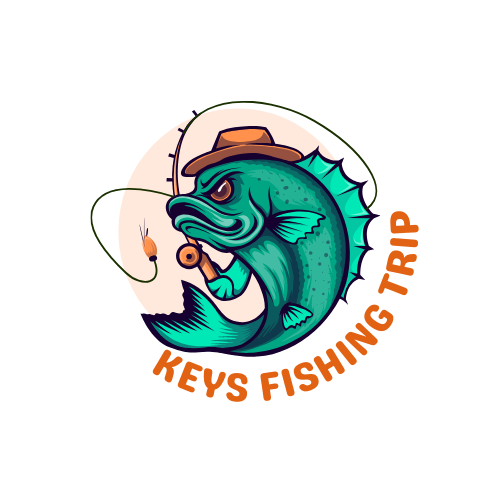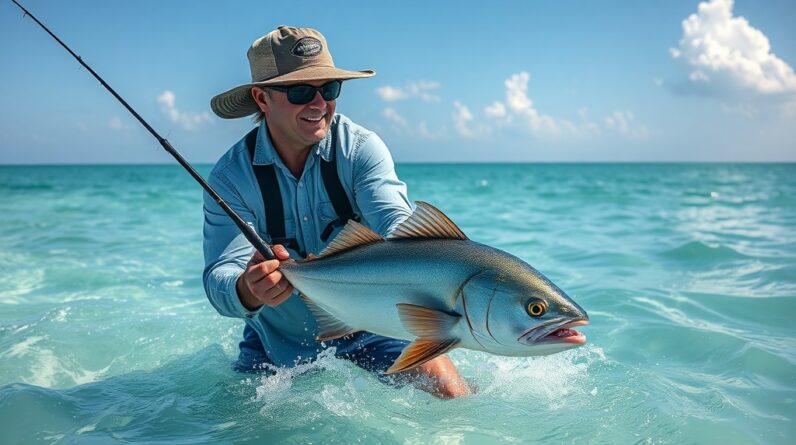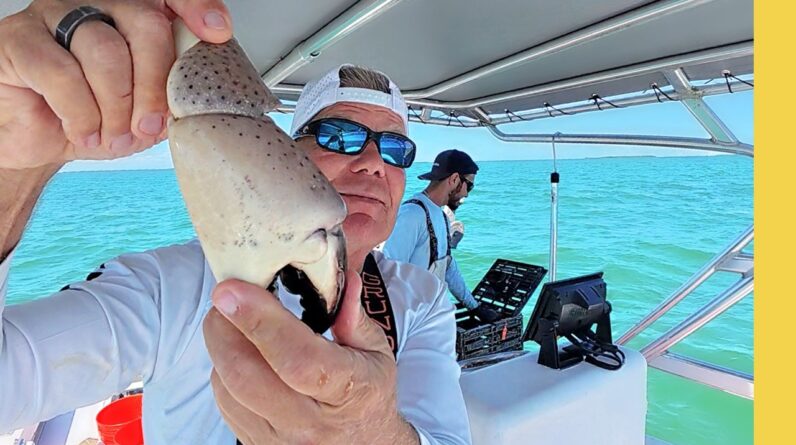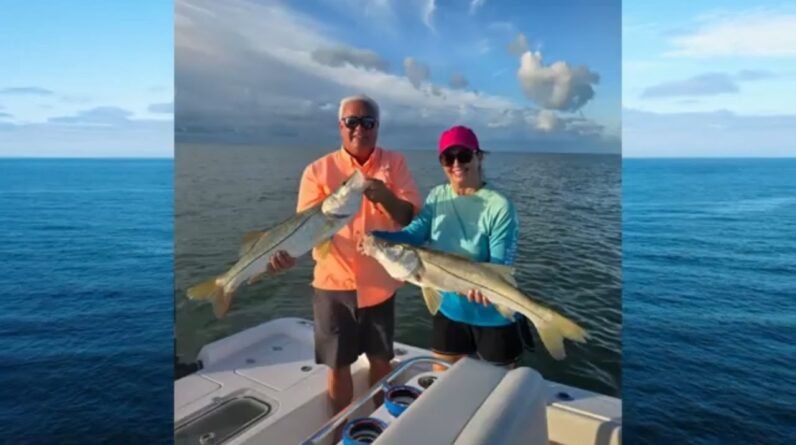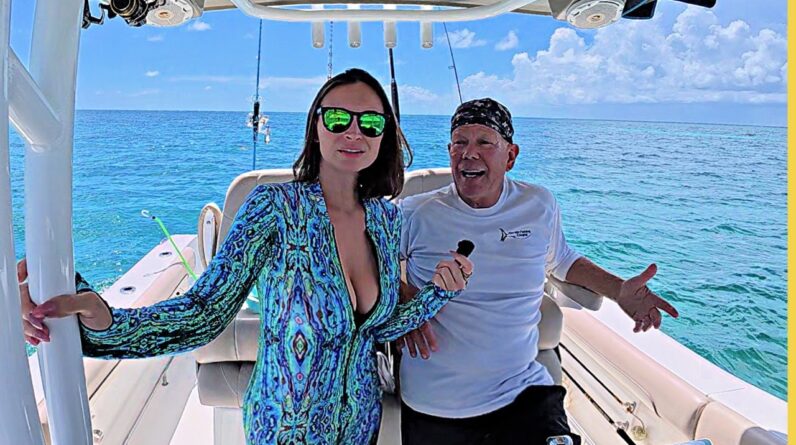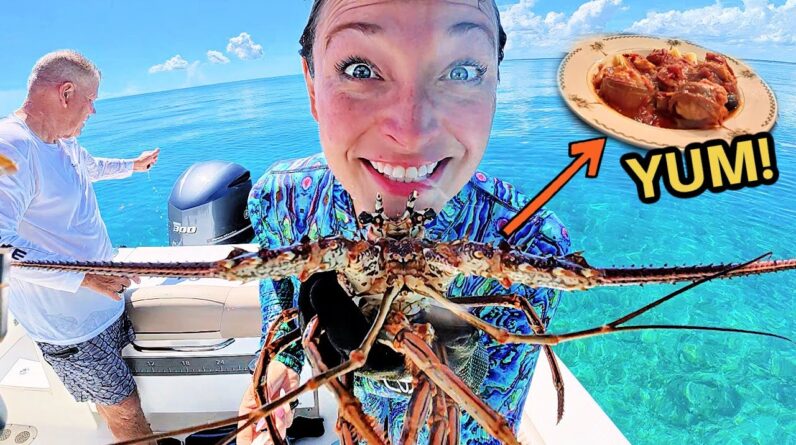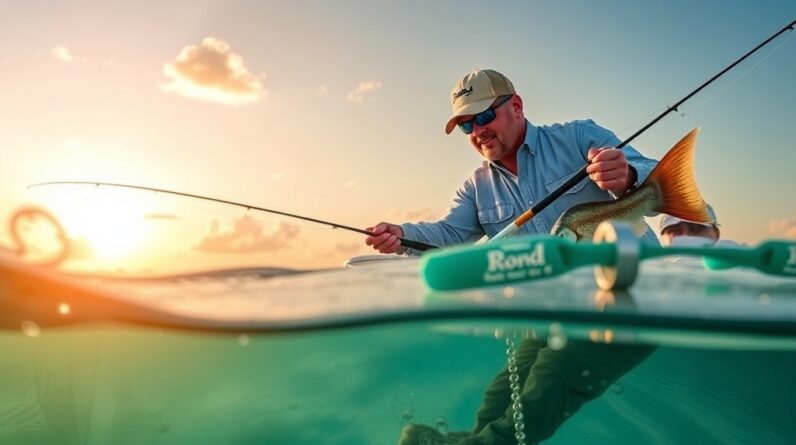
Table of Contents
Exploring the Best Bridges for Fishing in the Keys
If you’re seeking adventure while enjoying the serene beauty of the Florida Keys, bridge fishing should definitely be on your to-do list. This region is famous for its breathtaking bridges that offer some of the best fishing spots in the state. You can easily cast a line from many of the bridges connecting the islands, making it a favorite activity for both locals and tourists alike.
One of the most popular spots for fishing is the Seven Mile Bridge. Stretching over 6.7 miles, this iconic bridge not only connects Knight’s Key to Little Duck Key but also provides countless opportunities to catch a variety of fish. The clear waters beneath the bridge are home to species such as tarpon, snapper, and grouper. Fishing at dawn or dusk enhances your chances of landing a big one, as these are prime feeding times for fish.
Another excellent location is the Bahia Honda Bridge, which offers picturesque views and abundant marine life. The old bridge that used to connect the tiny island to the mainland has since become a hot spot for fishermen. Anglers often report success with tarpon and bonefish here. Make sure to have a good set of lures on hand, as the varied structure of the bridge creates excellent hiding spots for fish.
Do you enjoy the thrill of fishing under a starry night sky? The Long Key Bridge provides an amazing opportunity for nighttime fishing. This bridge is known for its tranquil setting and is often less crowded than others. Many local anglers recommend using live bait, as it tends to attract more fish during the evening hours. Don’t forget your flashlight to illuminate your spot!
For those who prefer a quieter fishing experience, the Card Sound Bridge is perfect. This bridge is less traveled and, therefore, offers a more peaceful fishing environment. It’s located further up in the Keys, providing a unique catch such as redfish and snook. Be sure to check the tides when planning your trip, as these fish are often more active during certain time frames.
While you enjoy fishing, it’s essential to consider equipment to enhance your chances of success. Here’s a quick checklist of items to pack for your fishing trip:
- Fishing rod and reel suitable for saltwater use
- Live bait or artificial lures
- Cooler for your catches
- Sun protection, including sunscreen and a hat
- Water and snacks to keep your energy up
- A fishing license, which is required when you’re in Florida waters
When you’re out on the bridges, it’s crucial to be respectful of the environment. Keep the area clean by disposing of trash properly and being mindful of the local wildlife. With the delicate ecosystems surrounding the Keys, your efforts help preserve these areas for future generations of anglers.
Additionally, understanding local fishing regulations can enhance your fishing experience and ensure that you remain compliant. Species, size, and bag limits can change, so it’s a good idea to check ahead before your trip. Local bait shops and information centers can serve as great resources to find this information.
Feeling a little adventurous? Consider putting together a fishing-friendly itinerary that includes multiple bridges in a single day. Each location offers a unique experience, from different species to varying scenery. Making the rounds not only maximizes your fishing opportunities but also allows you to explore the stunning landscapes of the Florida Keys.
Nothing beats the thrill of a big catch while surrounded by the sun, sea, and natural beauty of the Keys. So grab your fishing gear, head to one of these fantastic bridges, and enjoy the simple pleasure of fishing in a truly breathtaking environment. The Keys are waiting for you, and the fish are calling!
Essential Gear for Successful Bridge Fishing
Understanding the Basics of Bridge Fishing
Bridge fishing can be an exhilarating experience, especially when you’re amidst the stunning views of the Florida Keys. You’re not just dropping a line; you’re engaging in a time-honored tradition that can lead to an unforgettable catch. However, to make the most out of your bridge fishing endeavors, it’s crucial to have the right gear at your fingertips. The right equipment not only elevates your experience but also increases your chances of snagging those prized fish.
Essential Rod and Reel
One of the fundamental pieces of gear for successful bridge fishing is a robust fishing rod and reel. When selecting your rod, look for a medium to medium-heavy action rod that can handle the diverse species you might encounter, from snapper to tarpon. A rod between 7 to 9 feet long will give you the reach you need, especially when casting from higher up on a bridge.
Pair your rod with a spinning reel that has a smooth drag system. Choose a reel that holds at least 200 yards of 20-30 lb test line, as this will provide the strength needed for larger catches in these waters. Remember, bridge fishing often means you’re battling against the structure of the bridge and the current, so having a reliable setup can make all the difference.
Fishing Line and Terminal Tackle
For bridge fishing, using the right fishing line is imperative. Braided line can be a great choice due to its strength and sensitivity. A 20-30 lb braided line will serve you well. It’s thinner than monofilament, allowing you to spool more line onto your reel and providing less visibility to fish in clear waters.
Terminal tackle is equally important. Essential items include:
- **Hooks:** Use a variety of hook sizes, typically ranging from 1/0 to 5/0, depending on your target species.
- **Weights:** Depending on the current, you might require different weight sizes to keep your bait in the strike zone. Egg sinkers and pyramid sinkers are popular options.
- **Swivels:** These help prevent line twists, especially when using live bait or lures.
- **Leader Line:** A 20-30 lb fluorocarbon leader can be beneficial for stealth and abrasion resistance when fishing around bridges.
Bait and Lures
When it comes to bait, local knowledge is key. Live bait like shrimp, pinfish, and crabs often work wonders. They mimic the natural food found in the waters and can attract larger predatory fish. If you prefer lures, try casting jigs or topwater lures during the early morning or late evening. These can be enticing, especially when the fish are actively feeding.
Fishing Safety Gear
Safety should never be overlooked. Investing in a quality personal flotation device (PFD) is a must, especially as bridge fishing can involve unpredictable conditions. Additionally, wearing polarized sunglasses will help you see into the water better by reducing glare and allowing you to spot fish more easily.
Fishing Accessories that Enhance Your Experience
Beyond your primary gear, some accessories can enhance your fishing experience:
- **Tackle Box:** Keep your terminal tackle organized and easily accessible.
- **Fishing Net:** A net can help land fish quickly and safely, minimizing stress for both you and the fish.
- **Fish Gripper:** Useful for safely handling your catch without causing harm.
- **Cooler:** To store your catch or keep drinks cold, a cooler is invaluable on hot days.
- **Sunscreen and Bug Spray:** Protect your skin and keep pesky insects at bay.
Final Tips for an Enjoyable Experience
As you prepare for your bridge fishing adventure, remember to check local regulations regarding fishing seasons and limits. Respect the environment and practice catch-and-release when necessary. Keep your area clean and dispose of any trash properly. This not only ensures a great experience for you but helps preserve the natural beauty of the Keys for future generations.
Embrace the joy of bridge fishing with the right gear, and you’ll find yourself in the midst of a memorable fishing journey in the beautiful Keys.
Local Fishing Etiquette and Regulations in the Keys
If you’re planning to fish in the Florida Keys, understanding local fishing etiquette and regulations is essential for both a successful day on the water and a positive experience for everyone involved. The Keys are a beloved destination for anglers, and by following some basic guidelines, you can ensure that both the environment and fellow fishermen are respected. Here’s what you need to know.
Respecting the Environment
The Florida Keys boast some of the most beautiful marine environments in the world. You have a responsibility to protect these resources. Here are a few tips:
- Practice Catch and Release: When fishing for sport, consider releasing certain species to maintain the population. Use barbless hooks to reduce injury to fish.
- Don’t Leave Trash Behind: Always take your garbage with you or dispose of it in designated recycling and trash bins. The ocean is home to many creatures, and litter can cause significant harm.
- Avoid Anchoring on Coral: Protecting the coral reefs is crucial, so refrain from anchoring your boat on these delicate ecosystems. Instead, use mooring buoys when available.
Understanding Local Regulations
The state of Florida has specific rules that apply to fishing in the Keys. These regulations are designed to protect marine life and ensure sustainable fishing practices. It’s vital to familiarize yourself with them, such as:
- Licensing: Anglers 16 years and older are required to have a Florida fishing license. This helps fund conservation efforts across the state.
- Species Limits: Certain species of fish have restrictions on size and number. Always check the latest updates from the Florida Fish and Wildlife Conservation Commission (FWC) before your trip.
- Specific Seasons: Be aware of the seasonal rules related to various species. Some fish are off-limits during breeding seasons to allow populations to recover.
Being Courteous to Other Anglers
Fishing is often about enjoying the tranquility of nature and the thrill of the catch. Being courteous to fellow fishermen can enhance the experience for everyone involved. Here’s how:
- Share Space: If you find yourself in a crowded area, be sure to maintain a respectful distance from other anglers. Avoid casting over someone else’s line.
- Be Mindful of Noise: While it’s tempting to keep the atmosphere lively with music or loud conversations, keeping noise levels down helps everyone enjoy the serenity of fishing.
- Ask Before You Borrow: If you need to borrow gear or equipment, always ask kindly first. Remember, sharing is part of the fishing community!
Know Local Customs
The Keys have a rich fishing culture, and understanding local customs can enhance your experience. Here are a few to consider:
- Greeting Fellow Fishers: A friendly wave or a simple “hello” can go a long way. It fosters a sense of community.
- Learn Local Fishing Techniques: If you’re fishing with locals, ask about their preferred techniques. Many anglers are happy to share their secrets.
- Catching Up After a Day: If you’ve had a great day of fishing, don’t hesitate to share your catches. Many locals appreciate camaraderie and love discussing the day’s adventures.
Being Prepared for Emergencies
Fishing can sometimes lead to unexpected situations. It’s wise to always be prepared for emergencies. Consider these tips:
- Carry a First-Aid Kit: Accidents can happen. A well-stocked first-aid kit is essential for addressing minor injuries.
- Know the Weather: Always check forecasts before heading out. The weather can change quickly, especially in the Keys.
- Have Emergency Contacts Ready: Familiarize yourself with local emergency numbers, especially if you’re new to the area.
In the Florida Keys, fishing is more than a pastime; it’s a lifestyle. By practicing proper etiquette and following regulations, you can enjoy the thrill of fishing while also preserving the beautiful marine resources for future generations. Whether you’re a seasoned angler or just dipping your toes into the waters, respect and courtesy will go a long way in making your fishing experience memorable.
Seasonal Tips for Catching Popular Fish Species
Catching popular fish species can be an exciting adventure, but it requires different strategies depending on the season. Whether you’re an expert angler or just starting, knowing when and how to fish can enhance your experience. Here are some practical tips to help you catch your favorite fish throughout the year.
Spring Fishing Tips
As temperatures rise in spring, fish become more active after the colder months. Here are some vital tips for successful spring fishing:
- Target Spawning Areas: Many species, like bass and crappie, move to shallow waters to spawn. Look for warmer waters near weeds and structure.
- Use Light Tackle: Fish are more easily spooked in the clear waters of spring. Lighter lines, smaller hooks, and finesse techniques can entice bites.
- Watch Water Temperature: Fish are active when water temperatures reach around 60°F (15°C). Use a thermometer to find the optimal spots.
Summer Fishing Tips
Summer can bring warmer weather, making it essential to adjust your fishing techniques. Consider these strategies for your summer fishing trips:
- Fish Early and Late: The heat of the day can drive fish to deeper waters. Fish early morning or late evening for the best results.
- Use Topwater Lures: Summer is prime time for topwater action. Poppers, Frogs, and buzzing baits attract fish when they are feeding on the surface.
- Focus on Structure: In summer, fish often seek shade and cooler water near rocks, pilings, and submerged structures. Cast around these areas for better chances.
Fall Fishing Tips
As the water cools in fall, fish begin feeding more aggressively to prepare for winter. Here’s how to take advantage of this seasonal change:
- Chase Baitfish: In fall, baitfish often migrate, which attracts predatory fish. Use crankbaits or jigs that mimic these baitfish.
- Lure Color Changes: Fish are more responsive to colors that mimic the natural prey in fall. Consider using greens, browns, and muted shades.
- Fish the Wind: Wind can push baitfish to one side of the body of water, concentrating larger fish. Cast in these areas for concentrated action.
Winter Fishing Tips
Winter fishing can be a challenge, but with the right techniques, you can successfully catch fish even in colder conditions. Utilize these tips:
- Look for Warm Spots: In winter, fish congregate in deeper areas or where water temperatures are slightly warmer. Look for spots like thermal springs or deep pools.
- Slow Down Your Presentation: Cold water makes fish less aggressive. Slow down your lures and offer them a deliberate presentation for better results.
- Ice Fishing: If you’re in a snowy region, ice fishing can be incredibly rewarding. Use tip-ups or jigging rods and target species like trout and perch.
With these seasonal tips in mind, you’re well on your way to getting the most out of your fishing experiences. Remember, success often comes down to patience, persistence, and adaptability. Each season brings unique opportunities, so embrace the changes and enjoy the thrills of fishing.
Whether you’re fishing from a boat or the shore, these tips will help you connect with nature and the aquatic world. Happy fishing!
Community Resources: Finding Local Fishing Guides and Charters
When you’re exploring the vibrant fishing scene in the Florida Keys, finding reliable local fishing guides and charters is essential. These experts not only know the best spots but can also enhance your experience, ensuring you reel in your desired catch while immersing yourself in the natural beauty of the area. Let’s dive into how you can locate the best resources available for your fishing adventures.
One of the first steps you should take is to do some online research. Websites dedicated to fishing in Florida often have comprehensive listings of local guides and charters. These sites allow you to compare services and rates, helping you to make an informed choice. You can find reviews from other anglers which provides insight into what you can expect from various charters. A couple of popular websites to start with include:
- Florida Sportsman
- FishingBooker
- Angler’s Atlas
Another effective way to find local guides is through social media platforms. Many fishing guides actively engage with the community by posting pictures of their recent catches and sharing tips on platforms like Instagram and Facebook. By following local fishing groups or pages, you can get real-time recommendations and insights. Additionally, don’t hesitate to ask questions or seek advice from community members about their experiences with different charters.
It’s also beneficial to visit local bait shops or marinas upon your arrival. These spots often have bulletin boards filled with advertisements from local guides. You can even engage in a friendly chat with the shop owners or staff about their recommendations. They usually have firsthand experience and can guide you toward reputable charters. Look for shops that are popular with local fishermen, as they tend to have the best connections.
When evaluating local fishing guides and charters, consider their area of expertise. Some specialize in deep-sea fishing, while others may focus on flats or backcountry fishing. It’s crucial to select a charter that aligns with the type of fishing experience you want. Here are a few types of fishing charters you may encounter:
- Inshore Fishing Charters: Great for beginners and those seeking a more relaxed fishing experience.
- Offshore Fishing Charters: Perfect for adventurous anglers looking for larger catches such as marlin and tuna.
- Private Charters: Offers a more exclusive experience for groups or families wishing for tailored services.
- Shared Charters: An economical option where you share the boat with other anglers.
After narrowing down your options, inquire about the fishing licenses required. Most reputable guides will provide everything you need, including necessary licenses, gear, and tackle. Before booking, it’s wise to confirm the license policy to ensure a hassle-free fishing day. Additionally, check their rates, and be mindful of what’s included with your booking. Some charters cover bait and tackle, while others may not.
Don’t forget to ask about the charter’s cancellation policy. Weather can be unpredictable in the Keys, and you want a guide who is flexible in rescheduling your trip rather than losing out on your investment. A reputable charter will prioritize your safety and satisfaction, often recommending alternative dates rather than just providing a cancellation.
Consider your comfort and needs when selecting a fishing guide. Engaging with the captain or guide beforehand can give you a feel for their personality and how they operate. After all, an enjoyable experience depends not only on successful fishing but also on the partnership with your guide. Open communication about your goals will enhance your journey through these beautiful waters.
In the vibrant community of the Florida Keys, finding local fishing guides and charters is an exciting part of your fishing adventure. With the right preparation and resources, you are bound to create unforgettable memories while exploring the diverse fishing opportunities the Keys have to offer. Happy fishing!
Conclusion
As you embark on your bridge fishing adventure in the Keys, remember that preparation is key. The best fishing spots—such as the iconic Seven Mile Bridge or the scenic Bahia Honda State Park—offer diverse fish species waiting to be caught. Equip yourself with the right gear, from sturdy rods to tackle boxes stocked with lures suited for the local environment. Don’t forget to follow local fishing etiquette and regulations; respecting the communal fishing culture ensures a more enjoyable experience for everyone.
Understanding the seasonal patterns can also greatly enhance your success on the water. Whether you’re targeting tarpon in the summer or snapper in the fall, knowing when to cast your line is crucial. Additionally, connecting with local fishing guides and charters can provide insider tips and local knowledge that may otherwise take years to learn. These resources help support the local community while enhancing your fishing experience.
Ultimately, bridge fishing in the Keys is more than just a pastime; it’s an opportunity to connect with nature and the vibrant community surrounding this unique fishing culture. So, gather your gear, respect the waters, and dive into the thrilling experience that awaits you. With the right preparation, respect for the environment, and a bit of luck, you’ll create unforgettable memories and perhaps even land that trophy catch. Happy fishing!
